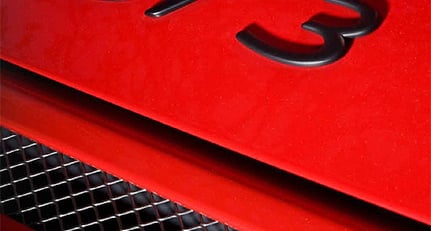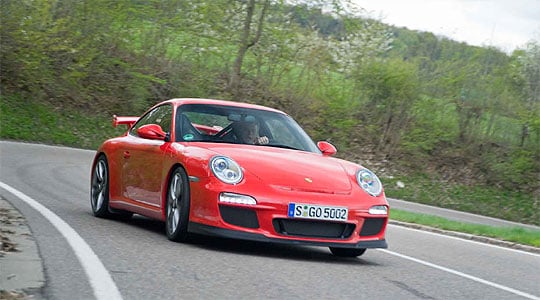
The previous Porsche 911 GT3 was so outstanding, it’s hard to imagine how improvement is possible. It’s already safely established as one of the greatest interpretations of the 911 theme that we’ve seen since the rear-engined, six-cylinder sports car first appeared in the early 1960s.
To devise a GT3, Porsche Motorsport takes the standard production model of the day and turns it into a track-day racer which is still civilised enough for everyday road use. A GT3 is for those owners who appreciate the finer points of handling and performance; it is not a car for posers. Based on the 997 body, the 2006 GT3 was a far more satisfying car to drive than the earlier 996-based version which it replaced. The difference was found in the fast corners: the 996 GT3 was completely safe at high speed but it lacked the exquisite handling quality of its successor which was, quite rightly, praised to the skies by every tester who got their hands on one.
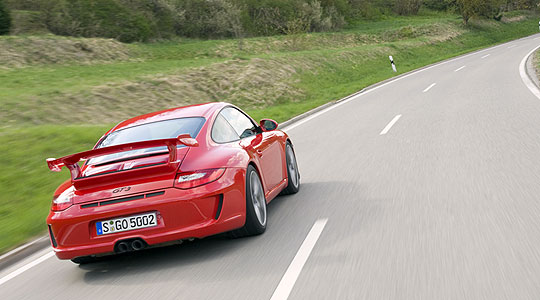
Now we have driven the latest GT3, the second-generation 997 GT3, which will go on sale in the autumn – and we have the answer to that question: how could it possibly get better? First, the engine has been made more efficient, resulting in slightly reduced CO2 emissions and fuel consumption, as well as more power. Displacement is up to 3.8 litres, with maximum power up 20HP to 435HP. A noticeable increase in mid-range torque sees 0-62mph in 4.1sec and a top speed of 194mph. The standard brakes have been uprated to suit the increased performance; ceramic brakes remain an option.
Porsche test driver, Walter Röhrl, found he was five seconds a lap faster round the old Nürburgring in the new GT3 than he had been in the previous model. This time, he got round in 7min 40sec and, when you’re down to lap times like that, five seconds is a very big difference. An increase of 20HP won’t save that much time. It’s the advances in aerodynamics which achieved that result, without doubt. On average, downforce has been doubled, thanks to a lowered and reshaped front spoiler plus a more aggressively angled rear wing, which follows a racing pattern. Close to maximum speed, the downforce is five times greater than before, producing 110kg at 300kph. Many hours of painstaking work went into the details, keeping the coefficient of drag admirably low at 0.32.
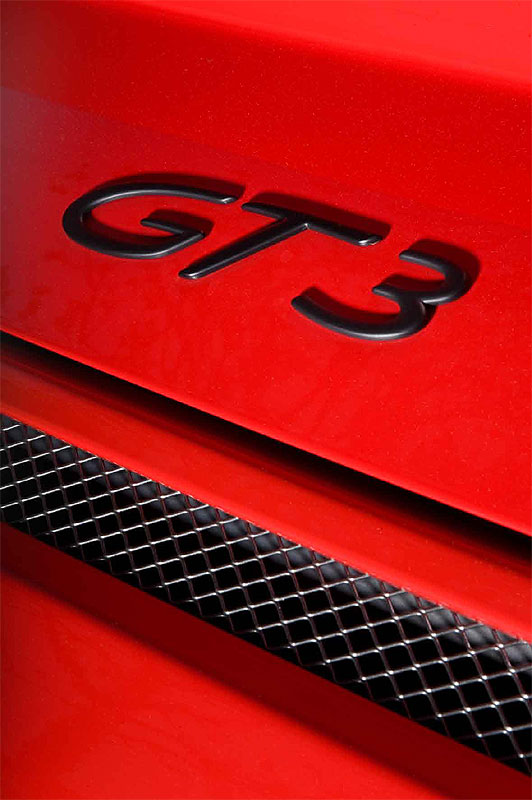
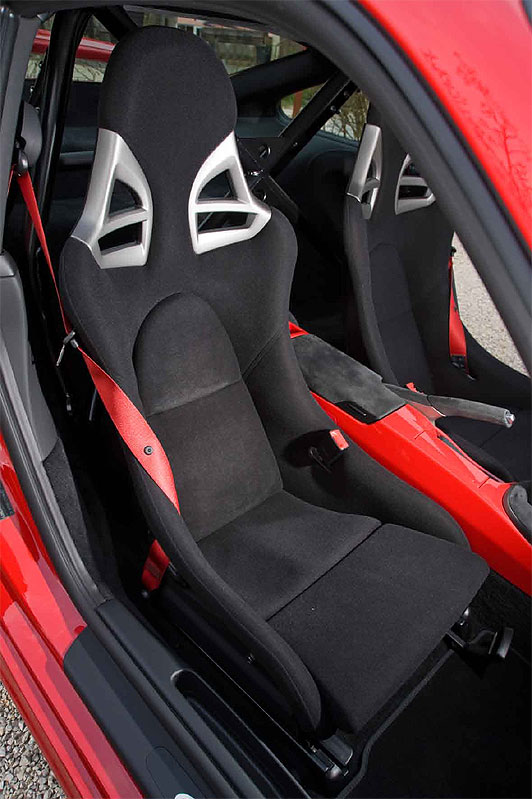
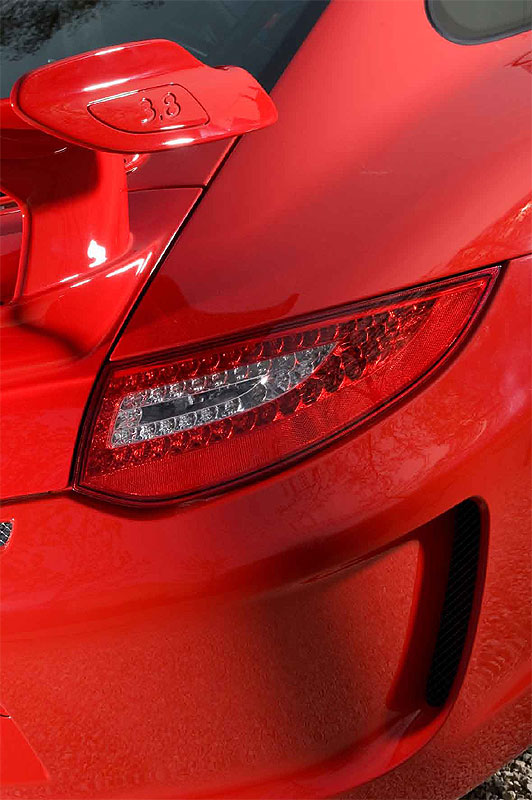
There are significant changes to the basic chassis set up as well as to the aero side, all aimed at reducing understeer, increasing rear axle stability and bringing a more benign feeling of controllability to an already excellent car. After driving the new GT3 extensively on the road in Germany, it does feel as if all the objectives have been achieved. Through bends on country roads, the steering response is accurate and grip is naturally excellent. Cornered fast, the GT3 is perfectly predictable and it feels very secure. Very close to its maximum speed on an unrestricted autobahn, the aerodynamic stability was perfect.
This time, the GT3 has acquired Porsche Stability Management, with software adjusted to please the fastest drivers. It can be turned off in stages, and that would be interesting on a fast circuit. These are not cars for beginners, obviously, but I think even the most experienced fast drivers will be surprised by how good these systems now are. They don’t intervene in an irritating, dumbed-down way any more. For fast road driving, however, it’s definitely better to leave all the electronic help turned on. I tried it both ways through slow to medium bends and came to the conclusion that it’s much more like hard work with ‘SC+TC’ off, and no quicker at all.
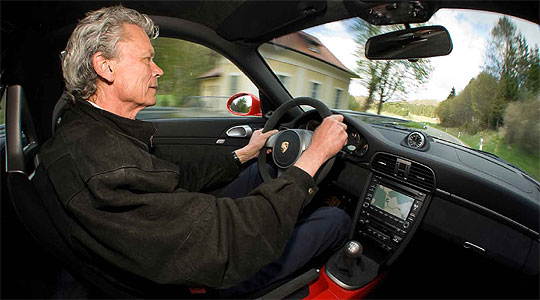
If you want the easiest ride in a 911, get one of the standard roadgoing models and, I suggest, opt for the excellent new PDK (double-clutch) transmission. On the more extreme GT3, you can only have the six-speed manual gearbox, which is 30kg lighter than the PDK. Keeping the weight down was a major objective in planning this GT3 and, at 1395kg, it is not one kilogramme heavier than the old one.
As before, the GT3 remains a civilised road car, considering its performance. It’s easy and unfussed in low-speed traffic and, despite the slightly stiffer springs and dampers, the ride is still surprisingly acceptable. If anything, it’s slightly better than before.
Now, just one question remains: when you get to a fast circuit like, say, Spa, and you point it into those ultra-fast bends, will this second-generation 997 GT3 feel as fabulous as the car it replaces? Well, Walter Röhrl tells me that it will and, thanks to that new downforce, it’s just that bit quicker and that bit more relaxed. Every instinct tells me he’s right there and Mr Röhrl has never told me a lie; ever.
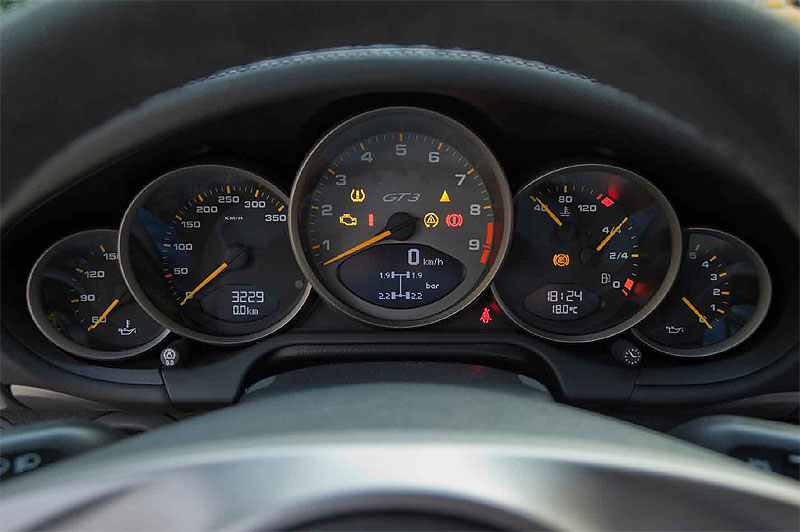
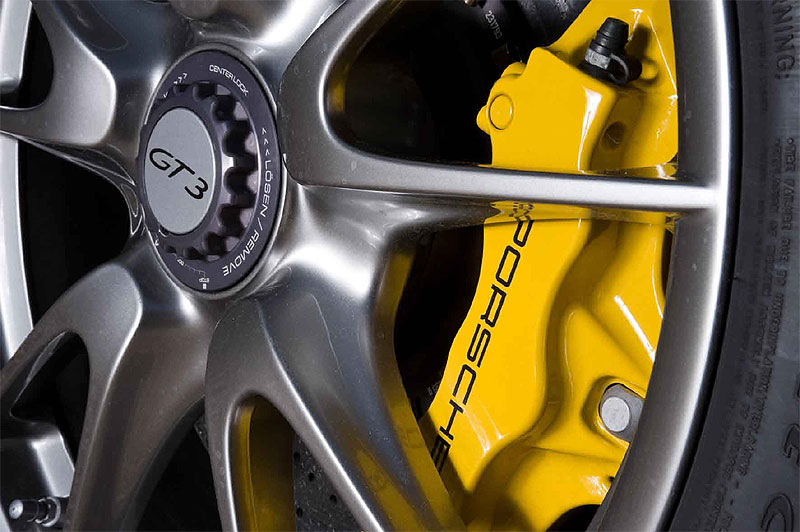
Costing from £81,914, the new GT3 is as attractively priced as ever. Like the last one, which sold out quickly, it’s a real bargain when you look at its rivals. No doubt there will be an RS version announced soon enough, but nothing has been stated yet on that front.
Text: Tony Dron
Photos: Antony Fraser
ClassicInside - The Classic Driver Newsletter
Free Subscription!
